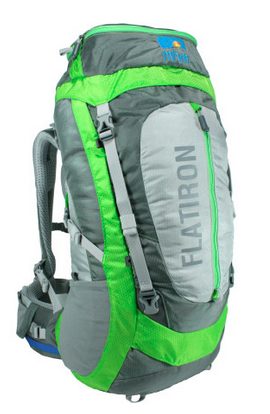
MHM Flatiron 42
Specs:
- Volume: 42 liters
- Weight: 4.5 lbs / 3.9lb*
- Fits Torso: 16-23 in.
- Fits Waist: 29-40 in.
- Number of Stays: 2
- Frame Material: 3mm x 20mm 6061 tempered aluminum stay and 1.5mm HDPE framesheet
- *Weight of pack with all removable features removed (top lid, straps and hydration holster)
MSRP: $249
Reviewer Info: 5’10”, 175 lbs
Locations Tested: Sangre de Cristo & Jemez Mountains, New Mexico
Days Tested: 10
The MHM Flatiron 42 sits pretty squarely in the middle of the company’s line-up. It can be a large daypack or a small weekend bag, and it has plenty of features to accommodate both uses. And while the Flatiron doesn’t include some of the niceties of MHM’s larger bags, (e.g. built-in waterproof stuff sack), it is more versatile.
As Matt noted in his review of the MHM Salute 34, the whole pack uses top-notch Cordura, and this attention to detail is apparent throughout the rest of the pack, too.
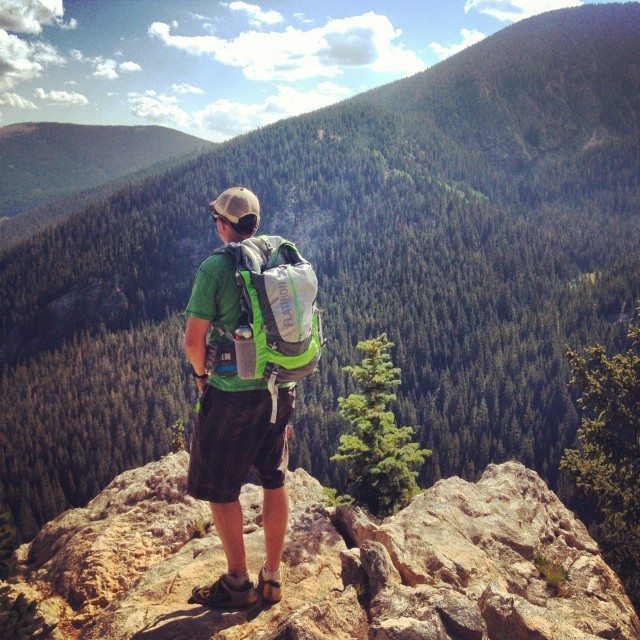
Fit / Suspension
This pack has a simple, adjustable suspension system. MHM utilized a design they’ve dubbed sYnc A.C., which ostensibly creates a pack that fits torsos from 17-22”. My torso is about 18″ (C7 to the top of my iliac crest), although I 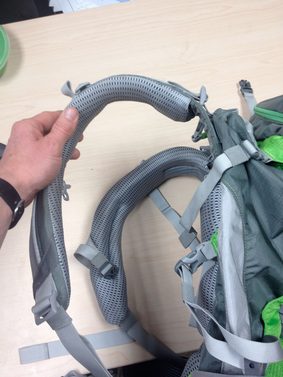 found the pack most comfortable with the suspension system set at 19”. This still leaves significant room for adjustment in both directions, which should accommodate a pretty wide range of users.
found the pack most comfortable with the suspension system set at 19”. This still leaves significant room for adjustment in both directions, which should accommodate a pretty wide range of users.
The load lifters are also very adjustable. Over the years, I’ve run across a number of packs with load lifters that either sat too low on the framesheet or didn’t connect far enough down on the shoulder straps, rendering them almost useless. Neither of those issues apply to this pack.
I should mention the sternum strap as well. I like the sternum strap to sit relatively low on my chest, but the one on the Flatiron had a tendency to migrate north over the course of a hike, requiring constant readjustment.
- Hip Belt
MHM uses the “Varicant” hip-belt design for the Flatiron. Honestly, I’ve never been able to tell the difference between fixed and pivoting hip belts. I can say that the amount of padding is really good, and it’s easy to adjust the hip belt.
The hip belt also has great pockets—they’re well-sized, with a zippered portion big enough for my camera and an outer pocket stacked on top that was big enough for a bar or a couple of gels.
- Padding
Then there’s the padding MHM used. The Flatiron isn’t intended for long expeditions, but with an overnight load of ~35 pounds, the padding performed well.
The thick padding on the back also improved ventilation. After having used a number of different packs over the years (Osprey Atmos, REI Talus, DaKine Poacher, BCA Alps, BCA Float, Deuter Guide), I’ve given up on the idea of a dry back, and I’m pretty convinced that the only way to get at least some breathability is by minimizing contact with your back.
As you’ll notice in the photo, the Flatiron has islands of thick foam to cushion the back panel and create air flow. This same system is used on the Deuter Guide 35 (albeit in a different arrangement) and I’ve found it to work better than just about anything else on the market. Granted, I was mostly using this rig in cooler temperatures (below 75 degrees F), but I was still impressed by the air flow created by the space between the islands.
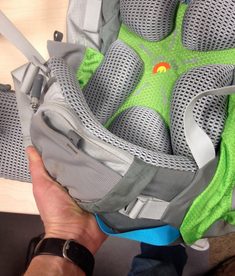
General Design
Let’s work from the top down, shall we? To begin with, the top pouch, which has zippers on both sides that really simplify issues later when you’re trying to find your knife and/or lighter and/or compass and/or head lamp, etc. There’s also a small internal zippered pocket, where you can store essentials you don’t need quick access to.
And thankfully, all these pockets have zipper pulls that are large enough to open even when you’re wearing gloves.
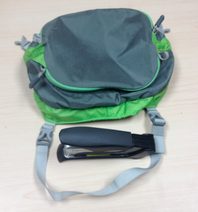
As with most large overnight packs, the top pouch is completely removable. Unlike most of those packs, there’s not a great way to turn this top pouch into a summit bag or fanny pack.
My other gripe is that, since the connecting straps for the top pouch on the wearer’s side of the pack are low and sit outside the shoulder straps, the top pouch slops off the top when the pack isn’t fully loaded. I think this could be fixed by either creating guide loops at the top of the framesheet or by placing the attachment point inside the shoulder straps.
The top of the pack’s main body is a roll-top closure. The material isn’t waterproof, so I’m not sure why MHM uses this style of closure. My old REI Talus 50 uses a drawstring closure with extendable collar that I prefer—it’s fast, simple, and gives you the option to add a little more volume to the bag.
The main compartment also features a top to (almost) bottom zipper. This is a heavy-duty #10 YKK zipper, and it opens from the bottom and the top, so you can access the bottom of the pack. It’s worth noting that though the compression straps cross the zipper, they also unclip, so you can get them out of the way.
